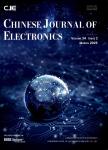版权所有:内蒙古大学图书馆 技术提供:维普资讯• 智图
内蒙古自治区呼和浩特市赛罕区大学西街235号 邮编: 010021

作者机构:School of Information Science and EngineeringCentral South University School of Computer Science and EngineeringHunan University of Science and Technology Harbin Institute of Technology Shenzhen Graduate School
出 版 物:《Chinese Journal of Electronics》 (电子学报(英文))
年 卷 期:2016年第25卷第6期
页 面:1109-1113页
核心收录:
学科分类:12[管理学] 1201[管理学-管理科学与工程(可授管理学、工学学位)] 081104[工学-模式识别与智能系统] 08[工学] 0835[工学-软件工程] 0811[工学-控制科学与工程] 0812[工学-计算机科学与技术(可授工学、理学学位)]
基 金:supported by the National Natural Science Foundation of China(No.61173052) the Natural Science Foundation of Hunan Province,China(No.14JJ4007)
主 题:Granular computing(GrC) Granular system Algebraic quotient space Congruence relation
摘 要:Granular computing(Gr C) is an emerging computing paradigm, and it is an umbrella term exploring multilevel granularity. we present a generic abstract mathematical model of the granular system. Supposing the inter-granule structure as an algebra, we propose the algebraic quotient space model. In this model, the granulation is based on a congruence relation and all the congruence relations on a granular system form a complete semi-order lattice, which is the theoretical basis for transformation,composition and decomposition among different granularities. The different granulation rules between the topological quotient space model and the algebraic quotient space model lead to the dissimilarity while composing granularities. A real-world case study is presented that demonstrates how the algebraic quotient space model works in the network transmission by error-correcting code. These work shows that the granular system model and the algebraic quotient space model are powerful conceptual modeling and functional specification methodologies for Gr C.